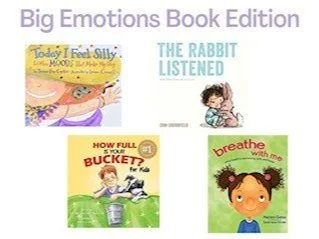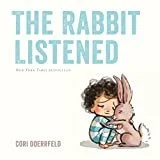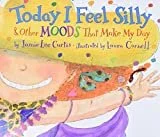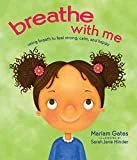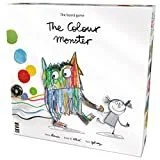Big Emotions
September marks a fresh start similar to the new year. Back to school, back to routines, back to sports and activities and back to being busy! Kids are experiencing new teachers, new classmates, new teammates and new groups. With all of this comes new emotions! We thought this would be a good time to explore some of our favorite books that talk about emotions and feelings and why we like to use them.
This book by Tom Rath and Mary Reckmeyer is great for teaching kids that their actions and words have the power to change how another person feels. It talks about the idea that we all have an invisible bucket, and throughout the day it is either filling up or emptying out. Negative actions and words can make our bucket feel like it’s dripping out and becoming empty. Positive actions and words fill it up. The best part of the book is when the little boy realizes that when he is being intentional about filling other peoples’ buckets up, his own bucket automatically feels fuller. It’s a great visual to use and reference later, recalling the “bucket” and how we can help fill it up.
The Rabbit Listened by Cori Dooerfeld is honestly a book for all ages. It’s definitely a book to gift in times when someone is dealing with some big emotions. It’s a book that grows with age, becoming meaningful in different ways as you continue to comprehend the thoughts and ideas behind it. This is the story of a boy who has made something incredible - only for it to come crashing down unexpectedly. There are many suggestions for ways the boy should respond and react, but none of them feel right. Ultimately, the rabbit is the friend that is able to comfort and console the boy through all of his emotions and behaviors by listening. It is a beautiful story of friendship and how to be there for someone throughout their struggles first and then one day, when they are ready, to rebuild together. We would recommend this book for children struggling with a friendship at school, grieving the loss of a loved one, going through a divorce or family struggle, as well as how to be the friend for someone else who is having a hard time.
This fun and silly book by Jamie Lee Curtis is just that….fun and silly! You can spend hours looking through the illustrations alone. There is so much happening on each page, it’s a great opportunity for describing and labeling. The book is full of rhyming, so although the scenarios and her feelings are real, the overall feel of the book is lighthearted. It talks about different emotions such as joyful, quiet, discouraged, lonely and not just happy and mad. She ties her different moods to different things that happen throughout the day. If you have a child that isn’t school-aged yet, it’s easy to skip over a page or even just talk about the emotion and other situations that can cause that emotion. The overall take away from the book is that although we always want to be joyful or happy, other moods are going to be a part of our days and that’s okay! At the end of the book there is a little face that has a wheel to change the eyes and mouth, creating a face that represents the mood that the child is currently feeling. This activity can lead into discussion about the child’s own day and how certain things make them feel.
Breathe with Me, written by Mariam Gates, teaches various breathing exercises in a very child-friendly way paired with situations that children face in their world. From birthday parties to going to bed at night, each page talks about different scenarios that may make a person feel nervous, anxious, upset, or scared, and gives a different type of breath to practice. This book is interactive, fun, and a great way to introduce breathing and body awareness as a means of self-regulation. Read this book aloud and practice breathing with your child or with your classroom as a whole-body activity.
The game is based off of The Color Monster Pop-Up Book. Both the book and the game do a great job of organizing certain feeling and emotions into colors. In the game, the monster is confused about his emotions, and the little girl is helping him figure out what they mean. Each color represents an emotion, and when the child rolls the die, they move the monster that many spaces and land on a color. Each color has a little circular chip that has to be matched into a jar (this is similar to a memory match game). If this is too advanced, just turn the jars to where the color shows and match with that visual cue. The fun part?! Before you get to make the match, you have to give an example of something that makes you feel the emotion represented by the color. Example, yellow represents happiness. So, if you land on yellow, you give an example of something that makes you feel happy and you can add the yellow circle into the yellow jar. Once all the jars are filled the game is over. It’s a great way to prompt discussion, work on matching, work on turn taking and describing.
You can also listen to our ideas on The Speech Source Podcast. We highlight favorite books, games, toys and puzzles weekly!
We are affiliates to several of the above products. Our recommendations are based on personal experience and are items we prefer and use often. For more information visit this page

